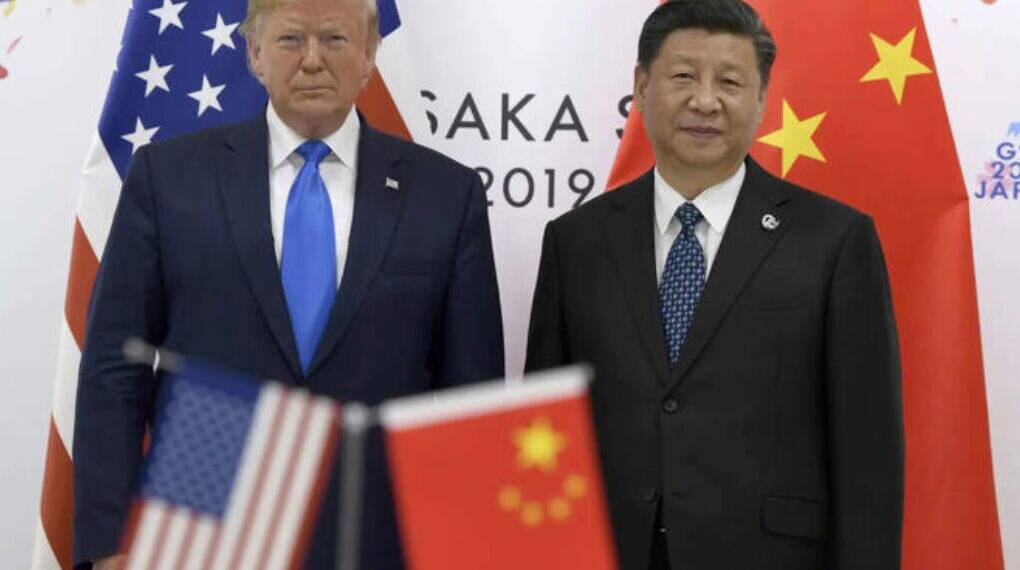The United States and China may have agreed to a 90-day rollback of tariffs, but to paint this development as a breakthrough would be both premature and dangerously optimistic. Behind the public statements, diplomatic smiles, and the market rally lies a much more sobering truth: this is not the end of a trade war. It’s a pause—an act of economic triage disguised as diplomacy.
The temporary agreement, announced following a surprise weekend summit in Geneva, slashes U.S. tariffs on Chinese goods to 30 %, down from a punishing high of 145–245 % on select items. China, in turn, lowered its tariffs to 10 percent—still higher than pre-conflict levels but significantly down from the retaliatory peaks. The truce officially begins Wednesday, just after midnight in Washington.
But scratch the surface, and it’s clear this is less a deal than a deadline extension. And it was driven not by resolution, but by mutual economic strain—and especially by America’s need to avoid a deeper domestic crisis.
Economic Necessity, Not Diplomatic Maturity
At first glance, the announcement brings hope. Tariff burdens that have been suffocating industries, rattling supply chains, and fueling inflation will ease. Markets have responded with optimism, albeit cautiously.
But this is not the product of a grand bargain. This is economic self-preservation, especially on Washington’s side.
The U.S. economy entered 2025 on shaky ground. Revised figures showed that real GDP contracted by 0.3% quarter-over-quarter in the first quarter. Should this trend continue into the second consecutive quarter, it would meet the technical definition of a recession. At the same time, inflation remains persistently high, manufacturing activity has weakened, and consumer sentiment has plunged to its lowest level in years. In such an environment, extending a tariff war with the world’s second-largest economy would have amounted to economic self-harm.
Rolling back tariffs—even temporarily—buys the White House time. It calms importers, cools price surges, and gives the Federal Reserve political breathing room. But it doesn’t solve the core issues that ignited this trade war in the first place.
China’s Strategic Patience Pays Off—Again
For Beijing, the benefits are even clearer. Chinese officials kept their messaging restrained and strategic. While President Xi Jinping presented China as a stabilizing force and “defender of globalization” during a summit with Latin American leaders in Beijing, Foreign Minister Wang Yi delivered thinly veiled jabs at the U.S., criticizing any power that believes “might makes right.”
The 90-day window works perfectly for China. It avoids escalation while its economy—already reeling from a prolonged real estate crisis and slowing domestic consumption—stabilizes. But more importantly, it does so without Beijing making any meaningful structural concessions.
Issues like state subsidies, forced technology transfers, cyber-espionage, and IP theft—the very core of U.S. complaints—remain unaddressed. Instead, China gains time to recalibrate exports, deepen its economic ties with the Global South, and continue expanding the Belt and Road Initiative—all while projecting a narrative that it’s Washington, not Beijing, that blinked first.
The Fentanyl Factor and Geopolitical Fault Lines
The U.S. retained a portion of its tariff hike—an additional 20% tied to accusations that China enables the export of chemicals used in fentanyl production. Beijing has flatly denied these claims and publicly bristled at what it calls “blame-shifting.”
This undercurrent of mistrust points to a deeper problem: this is no longer a mere trade dispute. It is a clash of systems, ideologies, and geopolitical ambitions. And it’s being fought on multiple fronts—from the South China Sea, Taiwan, Indo-Pacific to Africa and Latin America.
Temporary Fix, Long-Term Risk
History offers a cautionary tale. The much-publicized “Phase One” deal during Trump’s presidency fell apart within months after it became clear China was not honoring its promises on U.S. agricultural and industrial purchases. This new truce risks the same fate, only with higher stakes.
Analysts warn that a failure to resolve these tensions within 90 days could trigger an even more aggressive economic confrontation later in 2025. And because both sides have already “escalated” significantly, the next round could affect sectors that have so far remained untouched, such as semiconductors, rare earth minerals, and even defence-linked technology.
There is also the question of credibility. If Washington backs down without securing tangible reforms, it sets a dangerous precedent—not just with China but with other strategic competitors.
Conclusion: Don’t Confuse Calm with Resolution
The U.S.-China 90-day tariff rollback is not a peace treaty—it’s a timeout. While it may relieve short-term pressure on both economies, it does little to bridge the growing chasm between two fundamentally divergent models of governance, trade, and power.
Unless this window is used to forge real, enforceable agreements, the world is simply bracing for another round of economic crossfire—one that could be more disruptive and less containable than ever before.
And if U.S. policymakers mistake this lull for lasting peace, they may find that the cost of inaction far outweighs the pain of confrontation.








